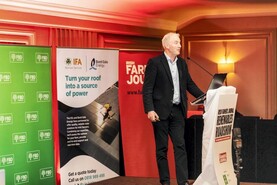Broiler production is the most carbon-efficient livestock farming, followed by pork, dairy and beef, according to Alltech poultry manager Paula McCooey.
McCooey told a Teagasc broiler conference in Limerick on Thursday that just 2.27kg of Co2 is produced per kilo of chicken live weight.
While highlighting the carbon efficiency of broiler producers, McCooey stressed the importance of continuing to make sustainability improvements.
“If you don’t measure your carbon footprint you are missing out on the opportunity to show all of the improvements you are making year on year, whether that be improving your poultry houses, moving towards renewable energy and putting in solar panels or the food conversion ratio (FCR) improvements that are made,” she said.
A case study with a UK broiler company has also shown how the global warming potential of chicken feed could be significantly reduced, McCooey explained.
The company calculated its carbon footprint in 2021 and then outlined a number of recommendations.
“They worked with their nutritionist to reduce the level of soya in the feed and they also ensure that the feed they are using is coming from a sustainable source.
“By doing this, they were able to reduce the global warming potential of the feed and then they also worked with Alltech to reduce FCR by six points. This was achieved by changing and improving managment practices.
“In 2022, they were able to show that the carbon footprint reduced by 47%,” McCooey said.
This example, she added, highlights the importance of having a baseline so that poultry farmers can measure the improvements that they’ve made.






 This is a subscriber-only article
This is a subscriber-only article










SHARING OPTIONS: